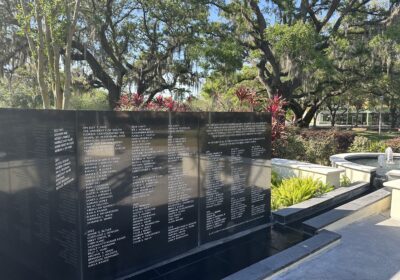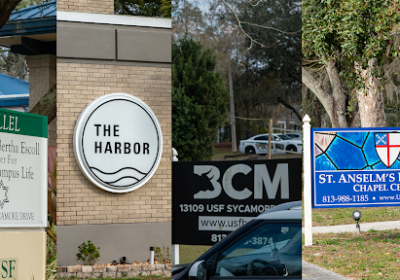USF launches new Automated Vehicle Institute
At the Frankfurt Auto Show in September, Nissan CEO Carlos Ghosn became the first carmaker to commit to developing a fully automated vehicle that is market-ready by 2020.
Following Ghosn’s declaration, other carmakers and technology companies such as Mercedes Benz, Google, IBM and Nokia jumped on board.
Recently, at the 2013 Florida Automated Vehicles Summit hosted by the Center for Urban Transportation (CUTR), USF announced the formation of the Automated Vehicle Institute to study the policy and planning surrounding the implementation of the emerging technology.
Partnering with the Florida Department of Transportation and the Tampa-Hillsborough Expressway Authority (THEA), the new institute aims to position Tampa Bay as a leader in automated vehicle technology and policy.
“This technology is going to be a disruptive technology that changes things,” Denis Eirikis, managing director of the Automated Vehicle Institute, said. “Just like the invention of the Model T changed the horse and buggy mobility of America, many people think that automated vehicle technology has the ability to change American mobility more than it’s been changed in the last hundred years.”
The new institute is the first of its kind in the country, focusing on the implementation, planning and policymaking behind automated vehicles as opposed to the technology itself.
The institute will build on its existing partnership with THEA to expand CUTR’s research to areas of policymaking and urban planning with regard to automated vehicles.
CUTR Director Jason Bittner said Tampa Bay has a strong advantage as a hub for this new kind of research.
Last year, Florida Sen. Jeff Brandes sponsored legislation to allow for the testing of automated vehicles in the state — making Florida the third state to allow such testing.
“We have predictable weather, we have this innovative expressway authority that’s operating here, we have CUTR and we don’t currently have a big investment in a fixed guideway transit system,” Bittner said. “All of these play a large role in how well Tampa Bay can be involved in this.”
The institute is hoping to have a large influence on the way Tampa and other urban cities utilize automated vehicle technology.
Bittner said the implementation of this new technology into urban areas could look like anything from automated taxi services to smarter, more intuitive signaling and road design.
Currently, traffic congestion costs the U.S. billions of dollars a year in wasted resources, Eirikis said. In some cities, at peak hour, up to 30 percent of traffic congestion is caused by people looking for available parking.
Eirikis said the implementation of automated vehicle technology into congested urban environments could completely change the way people get around.
“A lot of transportation futurists are looking toward a future right now where human-driven cars are kind of like elevator operators,” Eirikis said. “You may have seen an elevator operator once in your life, but elevators work better by machine.”
As officials in Hillsborough and Pinellas counties continue to debate new mass transit and transportation options to alleviate congestion downtown and across bridges, Bittner said automated vehicle technology may bring another option to the table.
“Here in Tampa Bay, we’ve been looking at light rail, rail or expanded bus lanes as options to solve our transportation problem, but now we want to look at if maybe automated vehicle adoption is an option,” Bittner said.
The automation of vehicles involve a large number of sensors, cameras and mapping systems that Bittner said may worry some consumers.
In addition to policy and implementation, the Automated Vehicle Institute also plans to do consumer research to look at what the value is to the consumer and the driving factors of the market for this new technology.
“It becomes a pretty high-value proposition when you look at the data,” Bittner said. “Thirty-two thousand people are killed on the roads every year and 95 percent of those are caused by driver error. If we could just cut that in half, that’s a lot of lives. If we can get to 95 percent and save that many lives each year, it’s pretty hard to make an argument
against it.”
Over the next few years, the institute will work closely with consumers, original technology manufacturers and transportation officials as automated vehicle technology becomes cheaper and more readily
available.
“Right now the technology is there, cars can drive better than humans,” Bittner said. “The big questions are: What are the legal implications? What are the policy implications? Do we program them to go the same speed as everybody else in traffic? What are the land-use implications? All of these are going to be big questions soon.”






